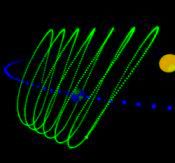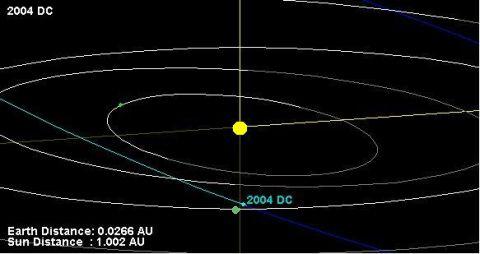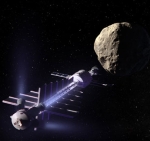 Damsel and I were out in the courtyard to watch the overflight of the International Space Station this evening. It was still pretty light out and I wanted to see if I could see Sirius in Canis Major as a gauge for the predicted magnitude of the ISS at -1.9. Sirius is magnitude -1.46, a little less bright than the satellite.
Damsel and I were out in the courtyard to watch the overflight of the International Space Station this evening. It was still pretty light out and I wanted to see if I could see Sirius in Canis Major as a gauge for the predicted magnitude of the ISS at -1.9. Sirius is magnitude -1.46, a little less bright than the satellite.
Image: Similar fireball photographed over Russia.
When I turned my attention eastward to look at Sirius, a bright meteor streaked across the sky, bright white initially and turning to orange and breaking into fragments as I watched. It was gone by the time I called to Damsel to come and look. This is the first fireball meteor we have seen in Arizona and the first one I, personally, have seen in over 20 years of looking up. The image in this post is not of the event we witnessed tonight, but a stock image of a fireball seen over Russia in the past.
In scanning local news reports, I have not seen any mention of this event. The good news is that Damsel and I both saw a nice ISS pass which makes three out of four in this recent series of evening passes. One was rained out earlier in the week.
We like to keep looking up. The stars here are usually spectacular and we see the Milky Way most clear nights.

 Late Wednesday night, as Damsel and I were walking the dogs, the skies were exceptionally clear for the urban Los Angeles area. We were looking towards the “
Late Wednesday night, as Damsel and I were walking the dogs, the skies were exceptionally clear for the urban Los Angeles area. We were looking towards the “


 A concept spacecraft could use gravity to tow asteroids away from a collision course with earth. Credit: Dan Durda – FIAAA / B612 Foundation.
A concept spacecraft could use gravity to tow asteroids away from a collision course with earth. Credit: Dan Durda – FIAAA / B612 Foundation. FIREBALL SIGHTINGS: In recent nights, sky watchers have seen some spectacular fireballs. Experts suspect it’s the Taurid meteor shower, a display caused by debris from Comet Encke.
FIREBALL SIGHTINGS: In recent nights, sky watchers have seen some spectacular fireballs. Experts suspect it’s the Taurid meteor shower, a display caused by debris from Comet Encke.